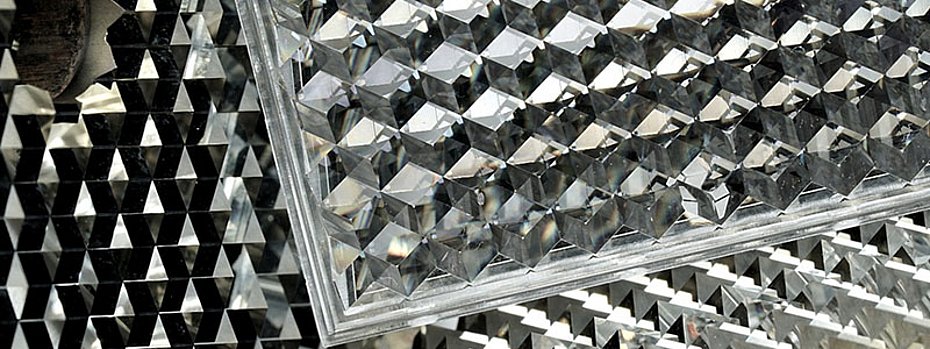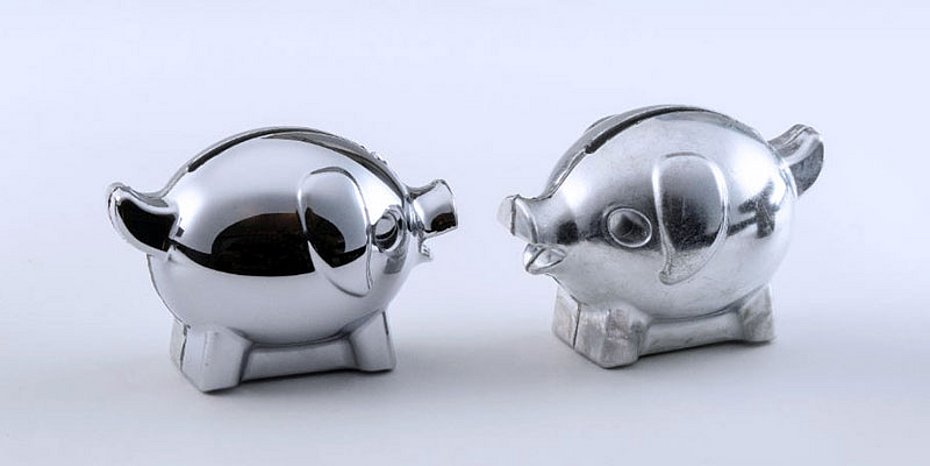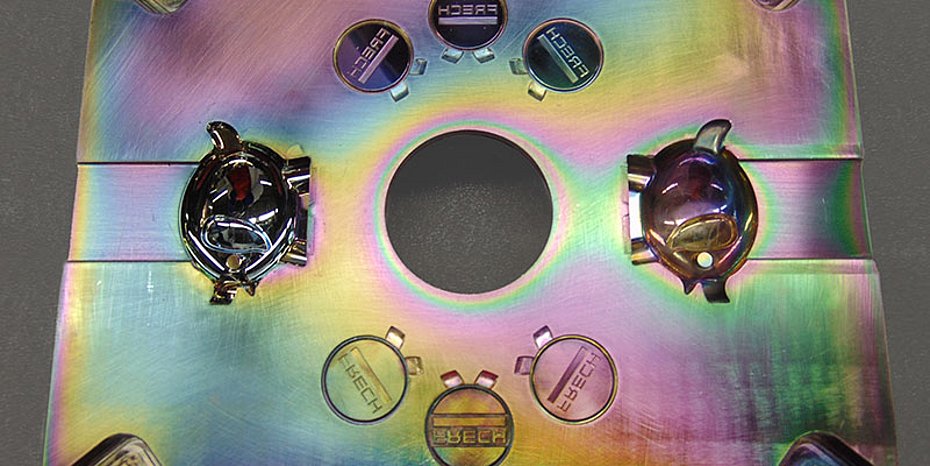The new UltraPlas coating developed by Fraunhofer researchers has proven in practice to be a pioneering solution to the challenges of primary forming processes. This advanced release and easy-to-clean coating is applied as a gradient layer using a cold plasma process and is suitable for materials such as tool steel, stainless steel and aluminum. Thanks to its special physical properties, UltraPlas enables perfect imaging of surfaces ranging from nanoscale to mirror-finish. Due to a reduction in post-processing steps and the absence of external release agents, the application is classified as highly economical.
How can high-quality and sophisticated tool surfaces be coated in such a way that production is improved and cleaning processes are significantly delayed or simplified? Researchers at the Fraunhofer Institute for Manufacturing Technology and Advanced Materials IFAM investigated this question together with partners in the "GlossyCast" and "UltraTrenn" projects funded by the Industrielle Gemeinschaftsforschung IGF. The aim of the research projects was to reduce the demolding forces and the formation of deposits on the mold surfaces and to permanently withstand the specific stresses of zinc die casting and plastic injection molding.
The injection molding of technical plastic parts in particular calls for solutions to reduce demolding forces and deposit formation. This applies in particular to the production of components with high-gloss surfaces or with highly defined microstructures, such as plastic lenses, decorative trims or connectors with high dimensional accuracy. Similarly, in zinc die casting, deposits as well as release agents and lubricants prevent the production of high-quality, shiny metal surfaces. This results in considerable costs for reworking. Irrespective of this, the application of release agent alone can account for around 20 percent of the cycle time, meaning that there is considerable potential for savings if release agents can be dispensed with.
UltraPlas enables outstanding layering properties
In order to meet the stated requirement profile within the projects that the release coating is able to produce ultra-smooth, optical surfaces (Ra < 25 nm), the coating itself must be smooth and structureless. To meet these criteria, the cold plasma process, the so-called PE-CVD process (plasma enhanced chemical vapor deposition), was used. By building up a gradient layer, this process enables excellent layer adhesion to the product body on the one hand and very good non-stick properties with excellent physical characteristics on the product side on the other.
The coating produced in this way is characterized, for example, by a high modulus of elasticity (28 - 32 GPa) and a high density (1.5 g/cm³). This results in a Mohs hardness range of 5.5, which is on a par with glass or enamel. Characteristically, as a non-stick coating, it also has a low surface energy (< 28 mN/m) with low polarity (< 1.5 mN/m).
This behavior is supported by the fact that the Fraunhofer researchers have succeeded in producing the UltraPlas coating with a particularly thin layer thickness of less than 100 nm. This even proved necessary in the GlossyCast project in order to provide a good non-stick effect. In addition, the thin, structureless layers allow both nanoscale surface structures, e.g. for the nanoimprint process, as well as mirror-gloss surfaces to be imaged perfectly.
Sustainable quality and economical production guaranteed
Extensive practical tests carried out as part of the projects at various industrial companies have shown that demoulding forces and the formation of deposits are reduced in the area of injection molding. It has also been shown that the reduction in adhesion forces reduces the total demolding forces. As a result, the demolding temperature can be increased and the amount of friction reduced.
In contrast to the state of the art, the coating can be removed effectively and gently using plasma technology so that, if necessary, a new coating can be applied several times without any loss of quality. This is particularly interesting for high-gloss tool surfaces, as it eliminates the need for time-consuming polishing or ultra-precision machining.
It has also been shown that the direct production of high-quality zinc die-cast surfaces using casting technology can significantly increase cost-effectiveness. By significantly improving the surface quality of the cast parts, costly and time-consuming mechanical post-processing steps such as blasting, grinding and polishing can be simplified or even avoided altogether. In addition, the individual process steps of electroplating can be shortened or reduced. The development of this durable UltraPlas release coating for zinc die casting represents a significant advance in foundry technology. The possibility of dispensing with the use of release agents opens up new potential for improving casting quality, reducing production costs and making production more environmentally friendly.
As the zinc castings are produced without release agents, the pre-treatment time for electroplating is reduced and material consumption is lowered. The manufactured components have the desired roughness. Due to the smoother surface, the bright copper coating can be dispensed with, which leads to savings in materials, time and waste water. Reducing the layer thickness of copper (cyanide) and bright nickel by 50 percent each led to further savings in materials and time. (OM-7/24)
The development of UltraPlas was preceded by the Plaslon non-stick coating, which is characterized by high hardness (Mohs hardness 4.5 - 5.5) and excellent temperature resistance up to 230°C. This property profile has made Plaslon a popular PFAS-free easy-to-clean coating for cookware. Through continuous innovation and the development of products such as UltraPlas and Plaslon, Fraunhofer IFAM is making a significant contribution to improving production processes and promoting sustainability in industry.
The following projects have been funded by the Federal Ministry of Economics and Climate Protection as part of the program for the promotion of joint industrial funding (IGF) on the basis of a resolution of the German Bundestag.
GlossyCast
Funding reference IGF 22003 N
Innovation in zinc die casting - Creation of mirror-glossy cast surfaces through release agent-free production
Duration: 01.02.2021 - 31.01.2024
Project partners: Fraunhofer Institute for Manufacturing Technology and Advanced Materials IFAM, fem Research Institute
UltraTrenn
Funding code: IGF 22597 N
Non-destructive, ultra-thin release coatings with layer thicknesses below 100 nm for reliable demolding and post-processing of micro-molded parts
Duration: 01.10.2022 - 30.09.2024
Project partners: Fraunhofer Institute for Manufacturing Technology and Advanced Materials IFAM, University of Paderborn
Contact
Fraunhofer Institute for Manufacturing Engineering and Applied Materials Research IFAM
Wiener Straße 12
28359 Bremen (Germany)
Phone +49 421 2246-0
Email: info@ifam.fraunhofer.de
www.ifam.fraunhofer.de
About Fraunhofer IFAM
Founded in 1968 and integrated into the Fraunhofer-Gesellschaft in 1974, the Fraunhofer IFAM is one of Europe's most important independent research institutes in the fields of adhesive bonding technology, surfaces, shaping and functional materials. At the five institute locations in Bremen, Dresden, Stade, Wolfsburg and Braunschweig as well as on the North Sea island of Helgoland, the focus is on research and development work with the aim of providing reliable and application-oriented solutions.



